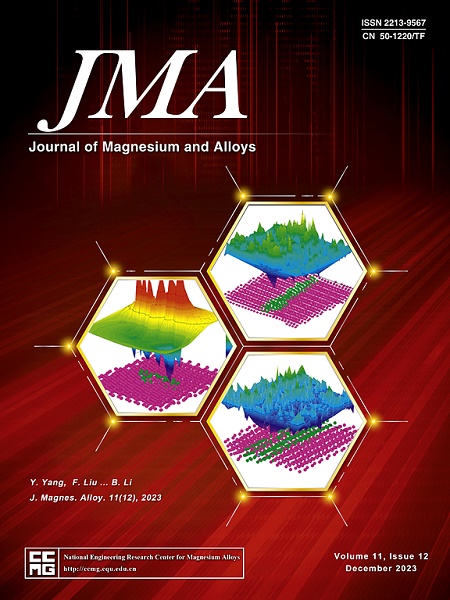First-principles calculations to investigate the structural, elastic and thermodynamic properties of full-Heusler MgXY2 (X = Zn, Cd, Y = Ag, Au, Cu) compounds
IF 15.8
1区 材料科学
Q1 METALLURGY & METALLURGICAL ENGINEERING
引用次数: 0
Abstract
Magnesium and its compounds are recognized as favorable materials for structural uses, primarily due to their lightweight nature and remarkable specific strength. This research employed first-principles methodologies to investigate how pressure affects the crystal structure along with the elastic and thermodynamic characteristics of MgXY2 (X=Zn, Cd, and Y= Ag, Au, Cu) compounds. All analyses were implemented via the Perdew-Burke-Ernzerhof variant of the Generalized Gradient Approximation alongside a plane-wave ultrasoft pseudopotential approach. The findings on the elastic constants indicated that these MgXY2 compounds have maintained their stability at pressures up to 500 kBar. These constants informed detailed assessments of properties like elastic modulus, Poisson's ratio, Vickers hardness, and material anisotropy. The Quantum Espresso software was utilized to calculate melting points, Debye temperature, and minimum thermal conductivity values. A temperature range spanning from 0 to 800 K allowed for an evaluation of vibrational energy, free energy, entropy, and specific heat capacity metrics. The anticipated physical attributes suggest significant potential for these magnesium compounds in biomedical fields.


通过第一性原理计算研究全赫斯勒 MgXY2(X = Zn、Cd,Y = Ag、Au、Cu)化合物的结构、弹性和热力学性质
镁及其化合物被认为是结构用途的有利材料,主要是因为它们的轻质性质和显著的比强度。本研究采用第一性原理方法研究压力如何影响MgXY2 (X=Zn, Cd, Y= Ag, Au, Cu)化合物的晶体结构以及弹性和热力学特性。所有的分析都是通过广义梯度近似的Perdew-Burke-Ernzerhof变体以及平面波超软伪势方法来实现的。弹性常数的研究结果表明,这些MgXY2化合物在高达500 kBar的压力下保持稳定。这些常数提供了诸如弹性模量、泊松比、维氏硬度和材料各向异性等性能的详细评估。使用Quantum Espresso软件计算熔点、德拜温度和最小导热系数值。从0到800 K的温度范围允许评估振动能,自由能,熵和比热容指标。预期的物理特性表明这些镁化合物在生物医学领域具有巨大的潜力。
本文章由计算机程序翻译,如有差异,请以英文原文为准。
求助全文
约1分钟内获得全文
求助全文
来源期刊

Journal of Magnesium and Alloys
Engineering-Mechanics of Materials
CiteScore
20.20
自引率
14.80%
发文量
52
审稿时长
59 days
期刊介绍:
The Journal of Magnesium and Alloys serves as a global platform for both theoretical and experimental studies in magnesium science and engineering. It welcomes submissions investigating various scientific and engineering factors impacting the metallurgy, processing, microstructure, properties, and applications of magnesium and alloys. The journal covers all aspects of magnesium and alloy research, including raw materials, alloy casting, extrusion and deformation, corrosion and surface treatment, joining and machining, simulation and modeling, microstructure evolution and mechanical properties, new alloy development, magnesium-based composites, bio-materials and energy materials, applications, and recycling.
 求助内容:
求助内容: 应助结果提醒方式:
应助结果提醒方式:


